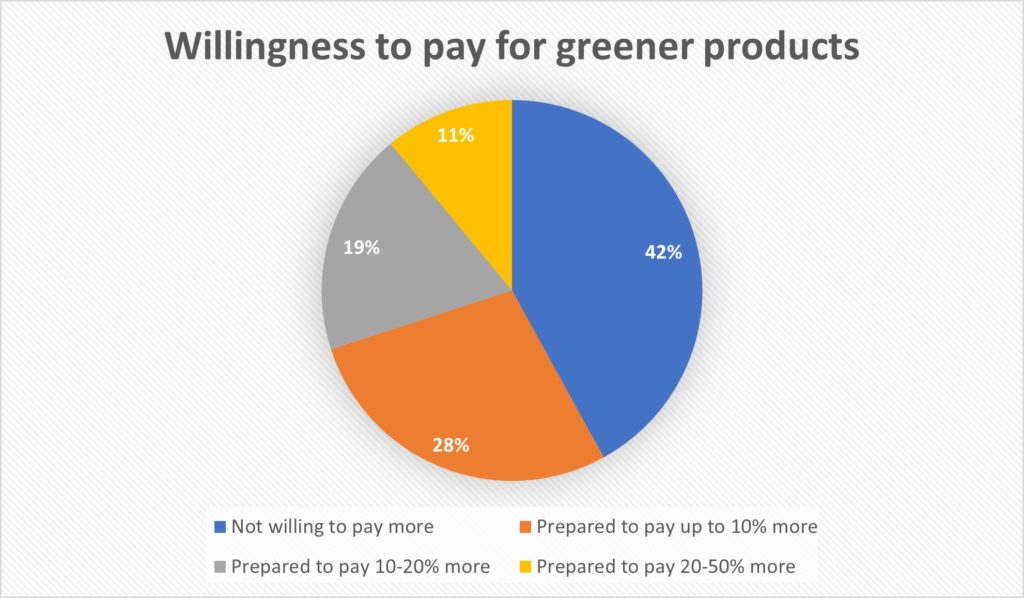Cultural Enterprises partnered with the Audience Agency on their Autumn 2022 survey, the Cultural Participation Monitor, to gain insights into consumer attitudes on a variety of topics.
Part 1 of our analysis focussed on spending in shops and cafés as well as concerns around Covid and the cost of living (read it here).
In this second part of our analysis, we’ll focus on attitudes toward sustainable products and people’s willingness to spend more on them.
Summary
- There is interest and demand for sustainable products
- However people’s willingness to pay more for them is limited
- Younger and highly culturally engaged visitors are willing to pay slightly more for greener and more ethical alternatives
- Price sensitivity is high, with an impact of margins.
Greener Products
We asked people about their views on greener alternatives to existing products; so those that are locally sourced, avoid single-use plastics, or use recycled or sustainable materials for example.
The majority of respondents were prepared to pay more, 58% compared to 42% who weren’t prepared to pay more. However, only 30% were prepared to pay more than 10%, with 28% willing to pay up to 10% more.

Four in ten people who say they wouldn’t be willing to pay more for greener products, still would prefer the greener alternatives, if only at the same price.
So there is a significant majority of people who are interested in sustainable products. Poorer households have as much intention as wealthier ones, and no great variety in geography or gender. This would therefore appear to be a very values-led decision for most consumers.
Interestingly there is still a group, 13%, who expressed no desire for a ‘greener’ product no matter the cost. These are slightly more likely to be male, and less likely to be culturally engaged.
The challenge for retailers is can they offer sustainable products at a competitive price and at the margins they are used to. This may pose difficult questions, especially when faced with the cost-of-living crisis, if margins may have to take a hit to ensure eco-friendly products and materials can be used, while keeping prices affordable and accessible to everyone.
Expressing an interest is one thing. In terms of willingness to pay more: younger people are more willing to pay higher for greener alternatives, 22% of 16-24s compared with only 2% of those over 75. Interestingly those in the poorest quarter of respondents were willing to pay more, 16% compared with only 9% in the wealthiest quarter.
A note of caution though; people’s intentions to spending don’t always translate into reality.
To find out more about the Cultural Participation Monitor, including more detailed analysis of attitudes toward cost of living, Covid, attendance, and future plans, please visit the Audience Agency website.
